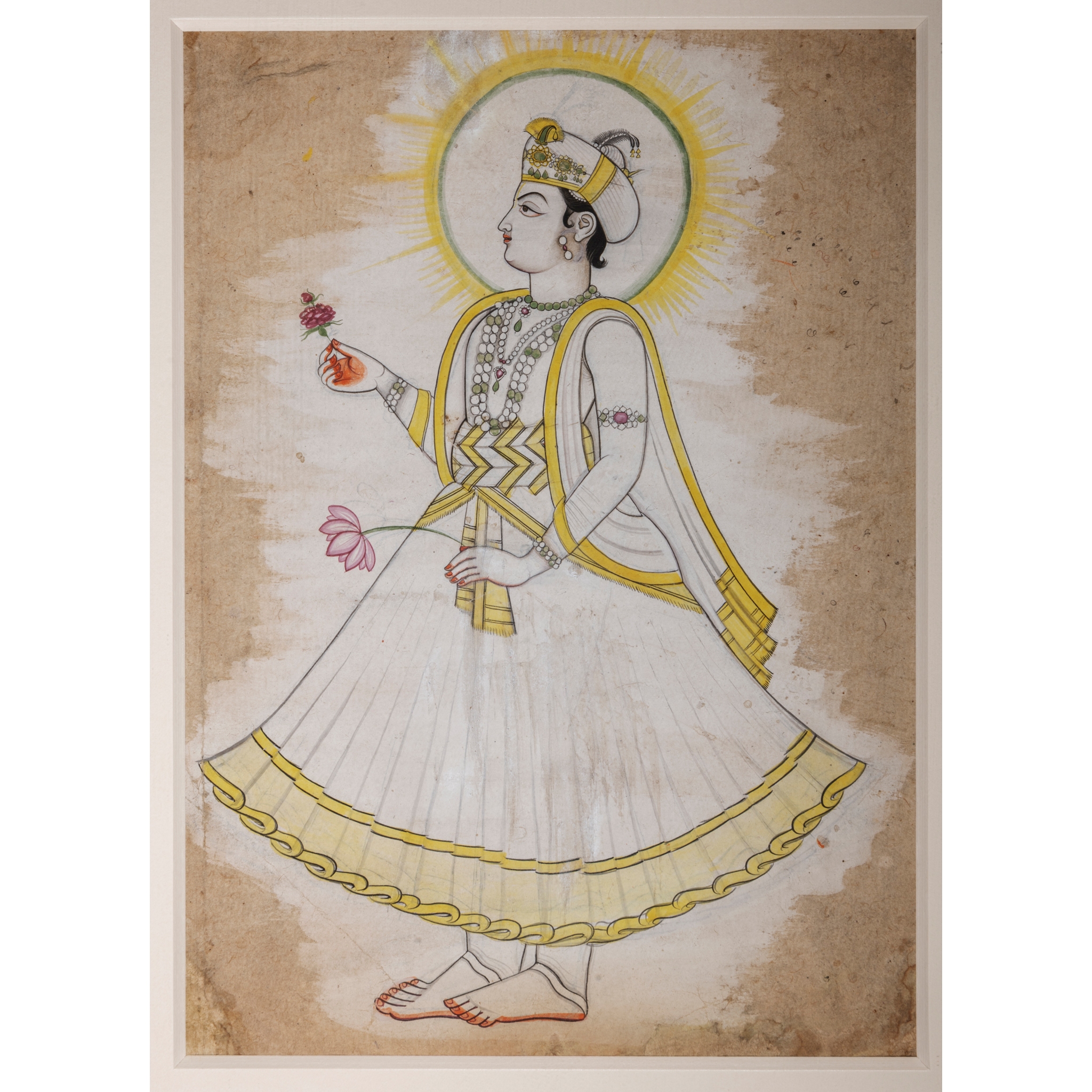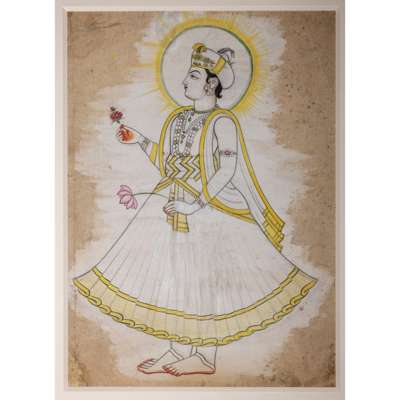
Lot 70

A PRINCE HOLDING FLOWERS ATTRIBUTED TO SAHIB RAM
INDIA, RAJASTHAN, INDIA, CIRCA 1790


Auction: 11 December 2024 from 10:00 GMT
Description
ink and gouache on paper, areas heightened with white and coloured pigments, the prince stands facing left holding a flower in each of his hands, dressed in a flaring pleated skirt secured by a patka, bedecked in pearls, emeralds and rubies, his turban adorned by a sarpech and two feathered aigrettes, a halo around his head
Dimensions
29.5cm x 21.5cm
Footnote
Not many paintings from Jaipur are in Western collections, largely because its royal collections were not dispersed, as were those in other states in Rajasthan and the Punjab Hills. Jaipur, which was known as Amber until the new capital city was founded by Jai Singh II in 1727, lacks a continuous history of painting. The Hindu rajas of Jaipur were amongst the first to extend cooperation to the Mughals, with Raja Bhar Mal (r. 1548-1575) giving his daughter in marriage to the Mughal emperor Akbar (r. 1556-1605), and his granddaughter to Jahangir (r. 1605-1627). Raja Man Singh was more than an ally of the Mughals; he became Akbar’s trusted general. Early painting in Jaipur was heavily modelled on the Mughal pattern.
A more characteristic Jaipur style emerged during the eighteenth century, when painting flourished during the reign of Maharaja Sawai Pratap Singh (1778-1803), a scholar, poet, ardent Vaishnavite and devotee of Krishna, whom he was meant to resemble in likeness.
Under the patronage of Pratap Singh, the Jaipur school of painting entered a new and dynamic phase, with his atelier consisting of more than fifty artists. The greatest master was Sahib Ram, the Chief Royal Painter at Jaipur to whom the present drawing is attributed.
Sahib Ram began his long career circa 1740, and would remain active throughout the second half of the eighteenth century until 1803. His earliest works were produced under the reign of Sawai Jai Singh II (1699-1743).
Sahib Ram’s most celebrated paintings, now in the Maharaja of Jaipur Museum, include a coloured bust portrait of Pratap Singh dated 1793, a full-size portrait of Pratap Singh also dated 1793, and a mural painting of Radha and Krishna dancing, accompanied by nineteen gopis.
Two large drawings attributed to Sahib Ram, preparatory studies for the mural painting of Radha and Krishna in Jaipur, depicting a “Singer and Sarangi Player” and the “Head of Krishna”, are in the Metropolitan Museum of Art, New York. These drawings, in a style similar to the present drawing, are published in Steven Kossak, Indian Court Painting: 16th-19th Century, 1997, pp. 119-121, cat. nos. 74 and 75.
For more information about Sahib Ram see Ritu Pratap, The Panorama of Jaipur Paintings, New Delhi, 1996, pp. 183-84.

